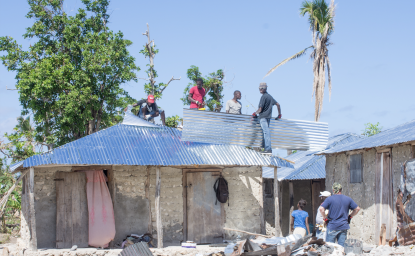BY ANDRIAN PROKIP
On March 16, the twenty-first day of Russia’s war on Ukraine, Ukraine’s energy system merged with the European power system. The merger was executed earlier than planned, and after many years of Ukraine being a part of a single power system with Russia and Belarus. It seemed symbolic that the final test of the process—when Ukraine’s power system had to work self-sufficiently, in “isolated mode,” without any imported energy from Russia, Belarus, or the EU—started on February 24, the first day of the war. This problem-free merger demonstrated that the Ukrainian energy system—and the people who work in it, who are also losing their lives—can function stably despite all the military assaults on the infrastructure.
It was just several months ago that most Ukrainian energy analysts expected a deep energy crisis before the spring of 2022. In 2021 the country faced the problem of stockpiling the necessary amounts of energy resources, chiefly coal, a problem that could be attributed in part to some regulatory mistakes. In addition, like all European states, Ukraine faced record-high prices for gas and coal. As the finishing touch, Russia stopped exporting steam coal to Ukraine and blocked its transit from Kazakhstan.
But the weather proved to be Ukraine’s ally: an unusually warm winter and additional coal imports from other markets helped Ukrainians survive the coldest months without problems. In February 2022, it was clear there would be no crisis around energy supplies.
But Russia’s war against Ukraine has deeply affected Ukrainian energy. On the one hand, Ukraine was dependent on energy imports from Russia and Belarus, Russia’s ally in the war. But now Kyiv has decided to refuse energy supplies from these countries and to rely on Western support instead. Supplies from anywhere are hard to procure because Russian shelling has damaged all elements of the energy infrastructure and induced losses for end-users.
Electricity and Gas: Production, Transportation, and Distribution
Constant bombardments have damaged Ukraine’s gas and electricity infrastructure. By the end of the third week of the war, about a million Ukrainians (roughly a thousand residential buildings) were left without electricity, and a quarter of a million were without gas. Energy company personnel are working day and night to restore supplies, but as the shelling continues, more infrastructure lines are damaged, and maintenance crews are hard-pressed to repair them.
Nonetheless, the electric power system worked well in the early weeks of the war. There were no blackouts in most cities and regions, and all technical requirements of the power supply were met. With the suspension of industrial production, power demand has fallen by 30–35 percent. The current coal stocks at Ukraine’s nuclear power plants (NPP) are adequate, and despite Russia’s takeover of two power plants, there is enough nuclear fuel to operate the remaining four Ukrainian NPPs for more than a year.
Renewable electricity facilities are more vulnerable to the bellicosities: about half of these facilities are located in areas of active engagement. These plants are at risk of partial or full destruction. In 2021, more than 13 percent of the electricity in the country was generated from renewable sources.
Gas production has fallen considerably. It is estimated to be 15 percent less than in the pre-war period. This decrease was caused by technical difficulties in conducting operations in areas where battles were being fought. For example, the Kharkiv region, under daily brutal assaults, is one of the major areas for Ukraine's gas production.
Vehicle Fuels
For many years Ukraine was deeply dependent on Russia and Belarus for diesel and petrol supplies. In 2020, these two countries supplied over 65 percent of all diesel and 40 percent of the petrol consumed in Ukraine. Once the war started, supplies were no longer delivered, resulting in a deficit in many regions. Also, fuel prices have risen because of a slight national currency devaluation and an increase in fuel prices in Europe. To cope with this, the government has temporarily allowed the use of lower-quality fuels, EURO-3 and EURO-4, and has reduced the taxes consumers pay on fuel. Now the fuel companies and the government are trying to organize reliable delivery of supplies from EU countries to Ukraine.
“Nuclear Terrorism”
Russian military forces seized control of the Chernobyl NPP, which had been decommissioned and is used to store radioactive wastes, and later the Zaporizhzhia NPP, the biggest NPP in Europe. Russians shelled the Zaporizhzhia NPP compound and facilities with radioactive materials in other cities. They also discharged ammunition in the vicinity of the Zaporizhzhia NPP, and disrupted the power supply to Chernobyl NPP twice. Such reckless—even insane—actions may lead to a pan-European radioactive disaster. President Zelensky and other officials have justifiably described these actions “nuclear terrorism.”
Gas Transit
Ukraine has banned the export of natural gas from Russia for the duration of the war. But Ukraine continues to transit Russian gas to EU markets according to an existing contract. Ukraine probably has not banned the transit of Russian-origin gas out of respect for EU interests. Also, Russia has enough capacity to deliver gas via pipelines that bypass Ukraine. Ukraine called on the EU to restrict the operation of one of these pipelines, Nord Stream 1, to support Ukraine during the war. The Polish prime minister earlier made a similar request.
Ukraine’s Synchronization with the European Power System
The Ukrainian power system was synchronized with the ENTSO-E on March 16, 2022. This merger had been in preparation since 2017. Despite the war, Ukraine’s electricity market is on track to become part of the single European market in 2023. Even if Russian hostilities dramatically reduce Ukraine’s power-generating capacities, supplies are now secured by the European side, while Russian and Belarusian energy systems have no further influence on Ukraine’s power system.
Just as Russia failed to break Ukraine’s resistance, so it was unable to break Ukraine’s energy stability.
The opinions expressed in this article are those solely of the authors and do not reflect the views of the Kennan Institute.
Author

Director, Energy Program, Ukrainian Institute for the Future

Kennan Institute
After more than 50 years as a vital part of the Wilson Center legacy, the Kennan Institute has become an independent think tank. You can find the current website for the Kennan Institute at kennaninstitute.org. Please look for future announcements about partnership activities between the Wilson Center and the Kennan Institute at Wilson Center Press Room. The Kennan Institute is the premier US center for advanced research on Eurasia and the oldest and largest regional program at the Woodrow Wilson International Center for Scholars. The Kennan Institute is committed to improving American understanding of Russia, Ukraine, Central Asia, the South Caucasus, and the surrounding region through research and exchange. Read more

Explore More
Browse Insights & Analysis
In the Wake of a Tropical Cyclone: Turning to Violence or Building Peace?

Healing Ukraine's Invisible Scars

Volunteers Open Doors in Sudan Typically Closed to International Aid Groups

